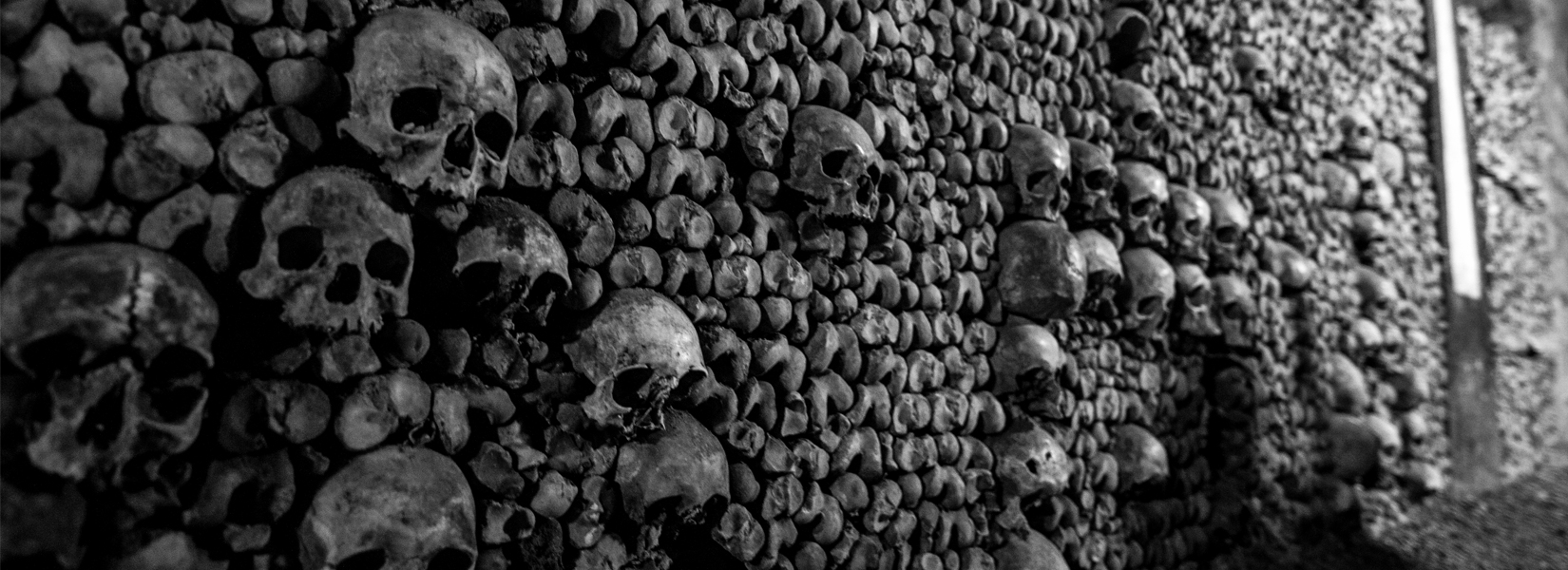It is at Uyuni, a small town of just over 10,000 inhabitants located more than 3,670 meters above sea level that can be found one of the most famous train cemetery. Well, we must also say that the world's largest salty desert is located in Uyuni...
The Catacombs of Paris
A day at the museum
No, this is not urbex, it is a € 10 visit at the museum. But it still remains one of the most unusual places that can be visited in Paris. The tour begins at Place Denfert-Rochereau in the 14th arrondissement. But in fact, with a two hours waiting line, the visit rather starts on the other side of Place Denfert-Rochereau and makes what seems a never ending way up to the main entrance. The building where you can access the Catacombs is as big as my hand and looks like a flower shop.
Although the place was officially opened to visitors (under the management of a museum) only in 2002, the catacombs have been visited since their creation in the eighteenth century. In 1787, the first visitor was none other than the Count of Artois, the future king of France, Charles X. Over the years, the place also received the visit of François 1st, emperor of Austria, Napoleon III and many others. In 1897, there was even a clandestine concert there, where artists from the Opera of Paris interpreted several songs of circumstance as Chopin's Funeral March and Danse Macabre by Saint-Saëns.
Despite a two kilometers path, the part open to public represents only a small portion of the network formed by the underground quarries of Paris, precisely 0.05% of the network. These quarries dating back to the Middle age, were used to extricate the stone used in the construction of most buildings in Paris at that time.
Between 1774 and 1776, the population begins to worry about the subsidence caused by quarrying. Louis XVI has no choice and requires a general inspection of the quarries. The task is daunting because they do not even know the extent of the underground network and many of them are in disrepair.
On the other side, the cemeteries of Paris are beginning to cause a lot of problems. The cemetery of the Holy Innocents, founded in the fifth century, has become over the centuries the largest cemetery in Paris. The lack of space makes it more and more difficult for dead bodies to decompose. The pits reach over ten meters deep. A terrible putrefaction smell covers the neighborhoods. It is more than 1500 corpses that are added every year in these pits. While diseases spread and that wells are contaminated by putrid substances, on November 9th, 1785, a decree from the State Council announces the abolition of the Cemetery of the Innocents and that all the bones will be moved to the Catacombs. It will take more than two years for the displacement of two million Parisians buried in the cemetery of the Innocents.
Other cemeteries will experience the same fate and we now estimate at six million the number of Parisians who have been displaced in the Catacombs.
Related content
While Catholics generally have the habit of placing their cemeteries behind the churches, this rule is often not respected among Anglicans who put their cemetery at the corner of a country road or in the middle of a pasture.
Many of these...




















